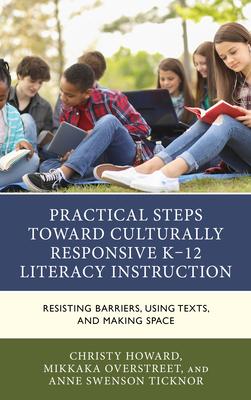Howard, Overstreet, and Ticknor build on the framework they established in their first book It's Not "One More Thing". They extend their practical how-to strategies for enacting culturally responsive and affirming literacy instruction in K-12 classrooms specific to literacy assessment, engaging texts used for literacy instruction, and navigating and resisting barriers. They build on their experiences and research of CRP to offer vignettes of literacy instruction that may be common in K-12 classrooms. These examples are offered to situate how teachers may use research based and effective literacy practices while ignoring the identities and experiences of their students. They then disrupt the vignettes using theories and concepts presented in the chapter to make visible how each practice could be reimagined to integrate more culturally responsive strategies. Example lessons and activities are provided in each chapter that offer readers glimpses into CRP thinking and decision making. Guiding prompts are also included for readers to use the chapter topic and example lessons to consider ways to be more culturally responsive teachers for their students and in their local communities.

Practical Steps Toward Culturally Responsive K-12 Literacy Instruction: Resisting Barriers, Using Texts, and Making Space
Howard, Overstreet, and Ticknor build on the framework they established in their first book It's Not "One More Thing". They extend their practical how-to strategies for enacting culturally responsive and affirming literacy instruction in K-12 classrooms specific to literacy assessment, engaging texts used for literacy instruction, and navigating and resisting barriers. They build on their experiences and research of CRP to offer vignettes of literacy instruction that may be common in K-12 classrooms. These examples are offered to situate how teachers may use research based and effective literacy practices while ignoring the identities and experiences of their students. They then disrupt the vignettes using theories and concepts presented in the chapter to make visible how each practice could be reimagined to integrate more culturally responsive strategies. Example lessons and activities are provided in each chapter that offer readers glimpses into CRP thinking and decision making. Guiding prompts are also included for readers to use the chapter topic and example lessons to consider ways to be more culturally responsive teachers for their students and in their local communities.